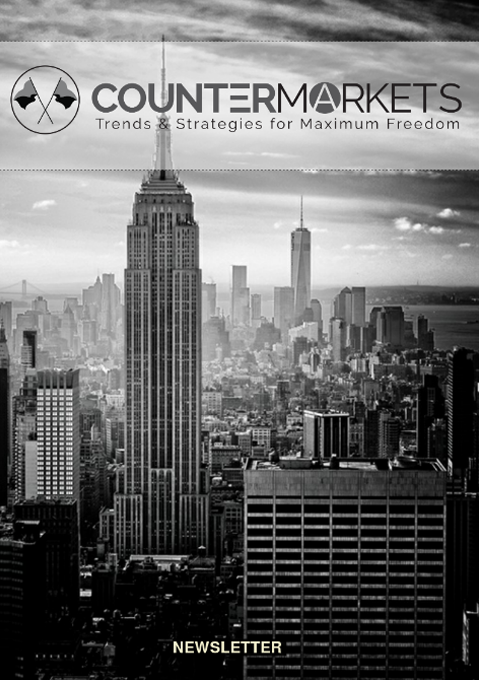 By Art Carden
By Art Carden
It seems everyone wants to raise the minimum wage. On May 20, 2019, PBS reported that pretty much everyone seeking the Democratic presidential nomination wants to raise the federal minimum wage to $15 per hour. President Trump advocated a higher minimum wage during his 2016 campaign. The private sector has gotten into it as well, with Walmart CEO Doug McMillon suggesting at the company’s shareholders’ meeting that Congress should raise the minimum wage.
As luck would have it, the Cato Institute released a policy analysis about a week before that in which Jeffrey Clemens of the University of California-San Diego provided a guide to recent theoretical and empirical research on minimum wages. The candidates — and Walmart’s C-suite executives — would do well to read it.
Clemens examines the arguments for higher minimum wages and finds them wanting on several important margins. First, the efforts to measure the effects as precisely as possible are admirable — and indeed, the “new economics of the minimum wage” following the mid-’90s empirical work of David Card and Alan Krueger represents an important part of what has been called “the credibility revolution” in empirical economics research — but the minimum wage research still suffers from important empirical and theoretical limitations.
To some, the empirical work on minimum wages of the last two and a half decades tells an almost-irresistible tale of plucky empirical Scientists questioning the unquestionable theoretical and ideological beliefs of old fuddy-duddies who didn’t think to look at the data very carefully. That overreaches considerably, though, and Clemens notes that if anything, the empirical literature is not nearly as clear-cut as some minimum wage advocates suggest. There might not be large employment losses, but the preponderance of the evidence suggests that there are employment reductions all the same.
And this leads us to Clemens’ second important criticism. There are a lot of ways firms and workers can adjust to higher minimum wages without anyone actually losing his or her job. Hours can fall, and this is what has happened in Seattle in response to a higher minimum wage. As Jacob Vigdor, an economist at the University of Washington and the lead investigator on the Seattle minimum wage study, explained on an episode of EconTalk, in addition to reductions in hours there were fewer employment opportunities for people who didn’t already have experience.
Importantly, there are a lot of other ways labor markets adjust to a higher minimum wage. To go into a setting with which a lot of readers might be familiar, imagine Congress passed a law mandating a $100,000-per-year minimum salary for a standard nine-month professorial contract. Some people won’t be affected, but a lot of people in the academy will. Should they be ecstatic about their new higher earnings?
At first glance, it looks like they should be. After all, someone going from $75,000 per year to $100,000 per year gets a substantial $25,000-per-year bump. But think about all the other ways the academic labor market can adjust by considering all the reasons people go into academia in the first place. More money is obviously better than less, but most of us take a substantial discount relative to what we could earn in other sectors because the life of the mind is mind-bogglingly great.
After all, who wouldn’t want a job where you get paid to read, think, speak, and write about things you find fascinating? A requirement that universities pay $100,000-per-year minimum would change a lot of the non-salary attributes of academic life.
How? Use your imagination and think about things colleges and universities provide to their faculty members in addition to salaries. First and most obviously, a lot of fringe benefits would probably go away. We could probably say goodbye to tuition reductions for family members or $0 tickets to sporting and arts events. Class sizes would almost certainly increase, and a lot of research support would probably evaporate; however, the research, teaching, service, and advising standards for tenure and promotion would likely remain unchanged and might even increase.
Maybe the office coffee pot goes away. You could probably say goodbye to some of the travel and technology support you might otherwise get; instead of getting a new computer every three or four years, maybe you get a new computer every five years. Maybe you’re expected to be in the office more frequently, and maybe the office is less comfortable (the heat is lower during the fall and winter and the air conditioning is lower during the spring and summer).
The mind boggles at the number of non-wage ways academic life might change with a $100,000-per-year price floor. I don’t know exactly how, but the point is that if we think beyond the immediate and obvious effects of a minimum wage, it becomes clear that there are a lot of ways firms and workers can adjust to higher minimum wages that leave workers worse off on net even if they don’t actually lose their jobs. If we can imagine academia changing in response to a wage floor, then surely we can expect low-wage labor markets to adjust similarly.
Higher minimum wages are likely linked to the perceived uptick in seemingly trivial firings at fast food restaurants in places like New York. At $8 an hour, an employer might be willing to be flexible with respect to scheduling and perhaps the occasional bout of flakiness (I’m thinking here of my younger and much less mature self and cringing a bit). At $15 an hour, firms are going to want a lot more reliability. As Jonathan Meer notes, minimum wages carry a lot of hidden and hard-to-see costs (Meer discusses his research on minimum wages on this episode of the Economics Detective podcast, and he debates James Galbraith here).
In response to higher minimum wages (and rising labor costs more generally), firms look for ways to economize on labor. Jacob Vigdor discusses this in the aforementioned episode of EconTalk, noting that in Seattle he asks people if they have and use the Starbucks app. Instead of actually ordering from a barista, people increasingly order on the app and then pick up their drinks. There are fully automated robotic coffee shops in San Francisco, and I’m noticing more and more that at restaurants like McDonald’s and Chick-fil-A it’s an app and not a cashier that is asking me if I’d like fries with my order.
This is in no small part due to rising costs of baristas and cashiers who are subject to higher minimum wages. Vigdor notes that more restaurants in cities like Seattle are moving away from full table service and toward a model in which the customers do some of the labor (busing tables, for example) for which they would have paid in other contexts.
So what are the right combinations of wages, benefits, working conditions, and so on? As external observers, it isn’t for us to know because we don’t have the relevant knowledge about people’s values, goals, talents, preferences, and so on. The “right” combinations aren’t legislated. They’re discovered — and to the extent that we have an institutional obligation, it is to ensure that people have the freedom to do so.
Sign up here to be notified of new articles from Art Carden and AIER.
Art Carden is a Senior Fellow at the American Institute for Economic Research. He is also an Associate Professor of Economics at Samford University in Birmingham, Alabama.
This article was sourced from AIER.org
